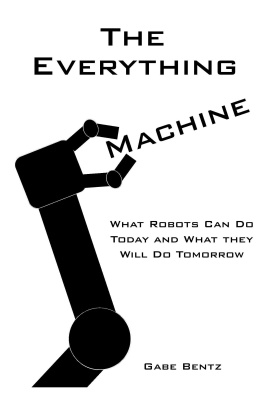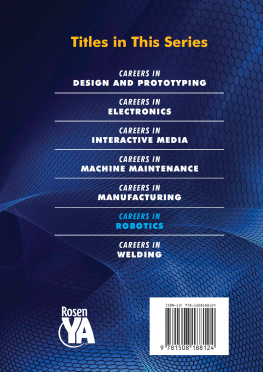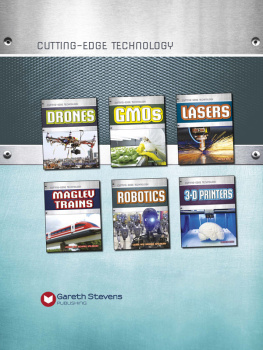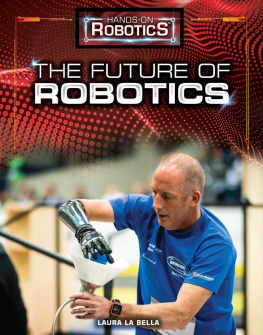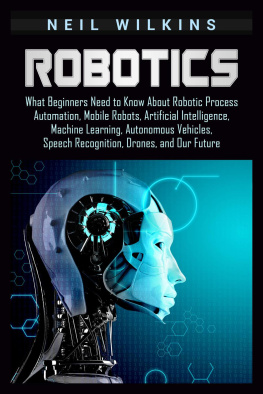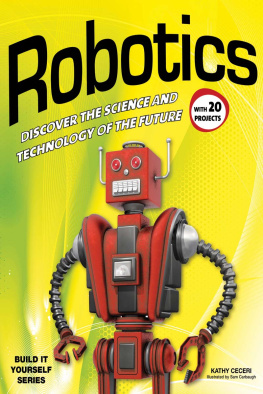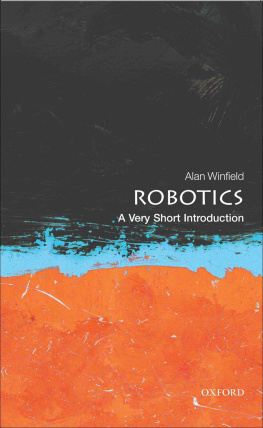Bentz Gabe. - The Everything Machine
Here you can read online Bentz Gabe. - The Everything Machine full text of the book (entire story) in english for free. Download pdf and epub, get meaning, cover and reviews about this ebook. genre: Science. Description of the work, (preface) as well as reviews are available. Best literature library LitArk.com created for fans of good reading and offers a wide selection of genres:
Romance novel
Science fiction
Adventure
Detective
Science
History
Home and family
Prose
Art
Politics
Computer
Non-fiction
Religion
Business
Children
Humor
Choose a favorite category and find really read worthwhile books. Enjoy immersion in the world of imagination, feel the emotions of the characters or learn something new for yourself, make an fascinating discovery.
- Book:The Everything Machine
- Author:
- Genre:
- Rating:3 / 5
- Favourites:Add to favourites
- Your mark:
- 60
- 1
- 2
- 3
- 4
- 5
The Everything Machine: summary, description and annotation
We offer to read an annotation, description, summary or preface (depends on what the author of the book "The Everything Machine" wrote himself). If you haven't found the necessary information about the book — write in the comments, we will try to find it.
The Everything Machine — read online for free the complete book (whole text) full work
Below is the text of the book, divided by pages. System saving the place of the last page read, allows you to conveniently read the book "The Everything Machine" online for free, without having to search again every time where you left off. Put a bookmark, and you can go to the page where you finished reading at any time.
Font size:
Interval:
Bookmark:
Introduction .. 2 What is a Robot? .. 3 How Robots Think . 8
Whenever most people think of robots they imagine the Terminator or some other movie representation of a robot. But few people really understand the technology and the abilities of these artificial organisms. Even people within the technology sector themselves do not fully understand the diversity and complexity and evensimplicity of these machines. I decided to write this bookto give an introduction to robots where a layman can take the material to a party and have a decent conversation with someone about it.
The chapters of this book will outline many of the various types and applications of robots that have been defined thus far. Then we will explore what robots can or could doif someone would only create it. And for the truly ambitious, we will talk a little about the philosophy of robots on a purely conversation and hypothetical level. Basically, we are just going to talk about robots for awhile.
This book is really a collection of essays. So, though theymay build on each other a little bit, each section is really meant to stand on its own.
If you are new to robotics this will give you a good introduction to the technologies that exist and even if you are a veteran you may find something you did not previously know about. Either way I hope you enjoy.
There was a reason this book was called The Everything Machine. We will get to that in a moment. For the time being let me explain from a technical perspective what a robot is.
At the most basic level a robot is a machine that can sensethe world around it, make a decision, and then take physical action, like swimming or grabbing, based on what is sensed.
In order to sense the world robots use a wide variety of sensors and technologies. They use infrared light, ultrasonic waves, laser beams, bumpers, and normal cameras to see their world. But these sensors just give a huge amount of data in the form of electrical signals. These signals are then analyzed and conclusions drawn by the brain of the robot. Today that brain is normally a binary computer which uses millions of transistors, which are just non-mechanical switches, to make a decision andcommand an action. The actual bodies of robots can beany machine. Robots can have arms or wheels, they can fly or swim, and they can be powered by a gas engine or a fission reactor.
That is the basic definition and outline of robots but lets go a little beyond that. Based on what I just said your 1950s thermostat is a robot. It senses the temperature of the room, decides whether to turn off the heat or turn on the heat and then does it. But that decision is based on how a piece of metal curls in response to heat but is thatreally a decision. Your car may decide to lose a wheel when it senses a bearing has gone out from too much driving without a service. A clock decides to add a second after is senses that a second has gone by. Are you starting to see the problem with the definition?
A robot is not some piece of clockwork that simple reacts when a button is pushed. A robot is not a machine thatreacts by breaking down. It is not a machine that simplyrepeats some basic command that it was given. A robot is really more of an artificial organism. A creature whose muscles are motors and whose synapses are transistors. That is what a true robot is. A robot is an animal created to perform some task. It has a behavior and basic rules that it follows but it is able to change and develop based on its environment. That is what a true robot should be.
But, most of the machines that are considered to be robots are not so elegantly organic. They are just highly complicated clockworks which simply use computer codeinstead of wheels and gears. So for most of this book a robot will be considered a machine that uses a computer to control a physical body inside of the real world. A robot is an extension of the virtual world into the real world. Well run with that for the time being. In reality thedefinition of a robot is like debating the philosophical truth of something being conscious, there are many facets to it and there is no black and white definition found inlogic. That should give me the cop out needed to continue with the book.
Now, a moment ago we left the idea of The Everything Machine to consider life. If one considers robots to beorganisms then you only have to look at the diversity of life to appreciate the diversity that robots can achieve. In fact, robots can become more diverse than the life on earth because they are only limited by the imagination of the creator, instead of mechanisms like evolution andgenetics. Robots can fly, run, walk, swim, or roll. They can be as large as a building or as small as a cell. They can live in the dirt or in space. They can be made of biological cells or cold steel and plastic. When a machine or organism can be so flexible how can its capabilities be limited?
Many people fear the ability of robots to do anything. Many believe that they will lose their jobs because robots can do anything. This is partially justified and is another gray issue surrounding the industry, but it is not thephysical capabilities of robots that people should fear.
Machines have long replaced human jobs. Steam and organized factories replaced skilled workers. A machine can be created to punch out car parts or clock pieces. Robots are just machines. Even if we made a perfect android it would not replace humans any more than any other machine ever has.
This is where robots are different from any other machine.Every other machine was simply a replacement to labor. All the machines of the industrial revolution replace muscle. The cotton gin killed the jobs of the people who would pick seeds from cotton (generally slaves but we will ignore that in order to make the point). The sewing machine replaced the many women creating and sewing new clothes. But these machines were simply a more efficient use of physical energy.
What is threatening about robots is that robots have brains. Currently these brains are highly limited but theyare brains. Robots do not simply replace the labor of people but they could replace the ideas and intelligence of people. This is what people can fear. Robots are ideally a perfect artificial facsimile of humans.
But that is all still some time away. Few have to worry about an android walking in and replacing you at yourdesk for now. Today robots have other strengths thatcould lead to the kind of increase in productivity thatcame during the industrial revolution. Like any machinerobots are great at doing repetitive things. And since robots are a little smarter today than normal clockwork machines (though not as smart as people) they can do fairly complex repetitive things.
In the movie WALL-E there is a sequence where theaudience sees this little robot collect trash, compact it into cubes, and stack those cubes. Over several shots theaudience sees that the robot is creating a skyscraper of trash cubes. It takes a long time but the little robot does not want to do anything else. It was created to compressand stack these cubes of trash over and over and over and over and over again until his battery goes dead. A clockwork machine cant do this but a simple robot certainly can. A basic artificial organism, as we defined robots to be earlier, can certainly perform such a task. Can you imagine a human doing something so menial and repetitive for their entire life without so much as a coffeebreak. It would drive them insane or wear them out. A robot does not become tired they simply break down. Anda robot has an unrelenting determination, in completing a task, which no human can match.
As I said before robots are dumb. But there are many things that dumb things can do. Look at ants. No single ant has any idea how to design an ant hill and yet togetherwith a few very basic ideas they create complex architecture and society. Robots can do the same. Today robots can be put to work performing tasks where their determination can be put to good use. They could combatinvasive species one plant at a time. They can clean oilspills one drop at a time. They can monitor borders night and day without ever falling asleep.
Font size:
Interval:
Bookmark:
Similar books «The Everything Machine»
Look at similar books to The Everything Machine. We have selected literature similar in name and meaning in the hope of providing readers with more options to find new, interesting, not yet read works.
Discussion, reviews of the book The Everything Machine and just readers' own opinions. Leave your comments, write what you think about the work, its meaning or the main characters. Specify what exactly you liked and what you didn't like, and why you think so.

